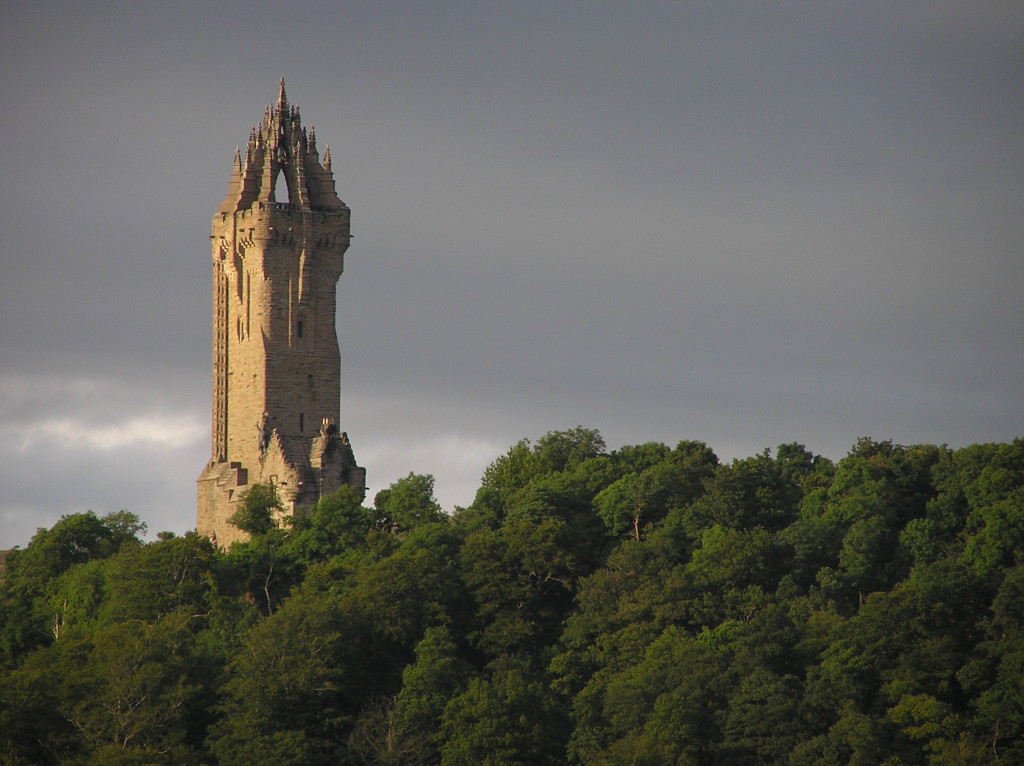A brief chat with Alan
I returned the bus early and chatted with Alan about Scotland’s recent independence vote and also mentioned that since he’d presented himself as a fiercely proud Glaswegian, I would have been quite disappointed had the music mix he played for us not included Gerry Rafferty. He claimed to have been a neighbor of Rafferty’s though he acknowledged that he was much younger than the musician. He then told me a bit of a variation of the story behind Baker Street’s iconic sax solo and I feigned being duly impressed.
He also talked in some detail about why he was so adamant in his opposition to the union with England. He spent several minutes giving me a history lesson and talked of abrogated treaties and agreements further bemoaning their exclusion from the school curriculum.
I thought to tell him that a similar situation exists in the U.S. with regard to the American Civil War.
I thought to tell him that the recent controversy over flying the Confederate Battle Flag on the grounds of South Carolina’s Capitol arose in large part because many history texts in use in the U.S. have chosen to depict the southern secession as a matter of state’s rights when the historical documents of secession often specifically cite the federal government’s refusal to punish certain northern states for refusing to enforce the fugitive slave laws.
I thought to tell him that the Confederate Battle Flag, claimed by some of its defenders to be a mark of pride and heritage and not the symbol of terror that it is to many, was rarely flown until the 1960s when African Americans had begun making incremental progress with regard to their civil rights.
I thought to tell him that even the center of the recent brouhaha, South Carolina, didn’t raise this flag until 1961 to commemorate the onset of the Civil War.
I thought to tell him these things but also realized they’d likely hold the same level of passing interest for him as his nationalism did for me. So I told him none of those things.
We stopped for lunch in a village called Aberfoyle. I had fish and chips and my first taste of Scottish Tablet ice cream. Tablet is a very sweet confection principally consisting of milk, butter and caramelized sugar. The bits are folded into (in this instance) vanilla ice cream creating an overwhelmingly sweet cap to the fish and chips lunch. Can you say sugar rush?
On to Stirling
Like Edinburgh Castle, Stirling Castle sits on a high rock atop Castle Hill and it’s surrounded on three sides by steep cliffs that contributed to its defenses. The castle overlooks Stirling Bridge – a small bridge that is the furthest downstream crossing of the River Forth – making it a critical strategic location in guarding routes to the Highlands to the west and the sea to the northeast.
The oldest (and most) of the structures you’ll see in the photos date from the period from about 1490 to 1590 although the oldest standing structure is the North Gate dating from about 1380.
A number of the Stewart kings and queens had their coronation in Stirling including Mary, Queen of Scots who received her crown in 1542. Here’s where you can see more photos of the loch and the castle.
The castle came under siege on at least eight different occasions – most of which occurred during the Wars of Scottish Independence that stretched for some three score years beginning in 1296. That period prominently includes the names of some Scottish heroes very familiar to many Americans – Robert the Bruce and William Wallace (aka Mel Gibson) although our driver Alan assured us in great detail that Gibson’s Oscar winning epic Braveheart bears the merest kernels of truth particularly with regard to his death.
Nonetheless, Wallace did win a crucial battle at Stirling Bridge in September 1297. Together with Andrew Moray they assumed the title of Guardians of the Kingdom of Scotland on behalf of King John Balliol. Eventually, John de Menteith turned Wallace over to King Edward I of England. Wallace was convicted of treason and executed in a most gruesome way. There is, however, a large monument to Wallace in Stirling.
As for Robert Bruce, he retook Stirling Castle in 1299 and became the King of Scotland but Edward put the castle under siege and captured it in 1304. A decade later, Robert Bruce’s and Edward’s forces met at the battle of Bannockburn in sight of the castle. The Scots routed the English and Sir Phillip Mowbray, who had earlier given his word to the Bruce that he would turn over the castle if it was not relieved by 24 June 1314, kept his word. King Robert then ordered some of the castle’s defenses destroyed so it couldn’t be reoccupied by the English.
And thus began the line of Stewart Kings.
Normally, I’d end my entry here but I have omitted one final event or series of events that transpired on the bus. It began in the morning as we left Edinburgh. I began chatting with the fellow seated next to me – a young Indian chap named Miraz who was visiting England with his wife and his parents to celebrate the graduation of his younger brother Shiraz from University.
Before the day had ended, I spoke with the father on the drive from Russ to Aberfoyle and with Shiraz on the two remaining segments. Shiraz is mad about golf and, since I had an extra ticket to the Open Championship, met him later that night and gave it to him.
He emailed me a thank you and this photo:
Tomorrow, my report from the Open.


